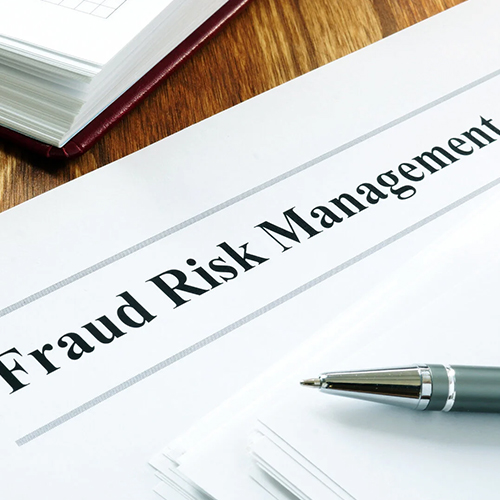Fraudulent activities are becoming more sophisticated in banking and financial services, posing significant risks. In 2023, nationwide fraud losses increased by 14%, with consumers losing over $4.6 billion to scams. This blog covers various fraud types and challenges in fraud risk management, including regulatory compliance, customer experience, resource constraints, globalization, data privacy, insider threats, evolving fraud techniques, and new payment technologies. Effective fraud management requires domain expertise and specialized tools.
Fraudulent activities are becoming more sophisticated in banking and financial services with the advent of new technologies and digital banking. As a result, financial fraud poses a significant risk to banks and their customers.
According to the Federal Trade Commission (FTC), nationwide fraud losses in 2023 increased by 14% compared to 2022, and consumers lost more than $4.6 billion to investment scams.
In recent years, there has been a surge in sophisticated fraud schemes, which poses unique challenges and difficulties in implementing fraud prevention measures.
In this blog, you will learn various aspects of fraud risk management (FRM), types of fraud risks, and challenges to managing fraud risks in banking and financial services.
For real‑world examples of fraud detection, explore this success story Flagged 100% Fraudulent Transactions with ML Fraud Detection System.
What is Fraud in Banking and Financial Services?
Fraud is the intentional act of deceiving others for financial gain or harming their reputation, brand image, and trust. It can take many forms, each requiring a unique approach to detection and prevention.
Some of the most prevalent frauds include:
- Identity theft
- SIM swap fraud
- Call/SMS forwarding
- New account fraud
- Cryptojacking
- Deepfake and AI-powered scams
- Rogue mobile banking apps
- Card Skimming
- Phishing (spear phishing)
- Smishing (SMS phishing)
- Vishing (voice phishing)
- Loan Fraud
- Romance scams, such as pig butchering
- Check Fraud
- Account Take Over (ATO)
The American Bankers Association (ABA) reports that in 2020, the banking industry faced $15.8 billion in fraud losses, with card fraud alone accounting for a significant portion.
According to the Federal Trade Commission (FTC), identity theft complaints more than doubled from 2019 to 2020, highlighting the growing concern about fraud in digital transactions.
In addition, more than 40% of banks in the US have seen an increase in fraud, with losses increasing by about 65%.
Further, fraudsters keep evolving their techniques and methodologies to exploit weaknesses in financial systems. A growing number of criminals also offer Fraud-as-a-Service (FaaS), including training materials and tutorials, to the highest bidder; the criminal in this setup conducts fraud using specialized tools and techniques.
8 Key Challenges in Fraud Risk Management
Combating fraud in banking and financial services poses unique challenges due to the inherent complexity of financial systems and modern fraudulent schemes.
1. Regulatory Compliance
Banks and financial institutions such as NBFCs operate in a highly regulated environment. These regulations constantly evolve with social, economic, and environmental changes.
Therefore, keeping up with these mandates requires intensive resources, planning, robust internal controls, and systems that can be costly and time-consuming.
2. Customer Experience
Managing fraud while ensuring a good customer experience can be challenging.
Too stringent measures for fraud detection can lead to dissatisfaction, frustration, delays, and potential loss of clients.
Similarly, lax measures for fraud risk management can increase the vulnerability of banks and financial institutions.
3. Resource Constraints
Managing fraud risks necessitates investments in advanced fraud detection and prevention technologies. It also requires skilled personnel and continuous training, upskilling, and reskilling.
However, budget constraints, lack of expertise, and technological issues can hinder a bank’s ability to implement fraud risk management strategies and mitigate fraud risks.
Balancing the cost and benefit of fraud prevention is a strategic, long-term pursuit.
4. Globalization and Cross-Border Transactions
Globalization has enabled businesses and given rise to cross-border transactions, increasing the complexity and scope of fraud risk management due to varying laws, regulations, and cultural practices. Different jurisdictions and geographical variations hamper the financial institution’s ability to respond to fraud incidents in a timely and effective manner.
5. Data Privacy Regulations
Fraud detection using AI, advanced analytics, and other technologies requires significant use of new and existing data. With data privacy regulations such as GDPR and CCPA, banks need to meet regulatory compliance while ensuring they can monitor and analyze data to detect fraudulent activities.
6. Insider Threats or Internal Fraud
Internal fraud or insider threats pose a major risk to banks and financial institutions. Frauds committed by employees, contractors, or partners can be hard to detect. These threat actors often exploit vulnerabilities in internal controls, systems, and processes to conduct fraud, harming the bank’s reputation and customer trust.
7. Evolving Fraud Techniques
Criminals and threat actors use more sophisticated techniques, tools, and software to commit fraud. For example, they use artificial intelligence and machine learning to create deepfake videos for launching synthetic identity frauds, which include creating a new identity by mixing authentic and fabricated information, including pictures. These evolving typologies pose unique difficulties to fraud detection and management.
8. New Payment Technologies
New payment technologies, such as cryptocurrencies, P2P payments, mobile wallets, etc., pose a new risk for the banks and financial services sector. Fraudsters often use these payment technologies as they offer anonymity and make it difficult to track criminals or fraudsters.
Read our white paper Mitigating Financial Crime Risks in the Age of Cryptocurrency that discusses some key strategies to overcome these challenges.
Conclusion
Banks and financial institutions are prone to fraud, especially in an evolving and globalized financial services ecosystem. Geopolitical situations, new internal and external threat actors, convoluting fraud typologies, and systemic gaps exacerbate the fraud management capabilities of institutions.
At the onset, effective fraud management requires a thoughtful combination of domain expertise and specialized tools that can provide a commensurate counter-force to thwart fraud. Also, the governance framework must incorporate specific mandates to bring in the necessary checks and oversight.
For a comprehensive approach to compliance, read our e‑book A Banker’s Guide to Financial Crime Compliance.
To learn more about fraud risk management, reach us at info@anaptyss.com


















